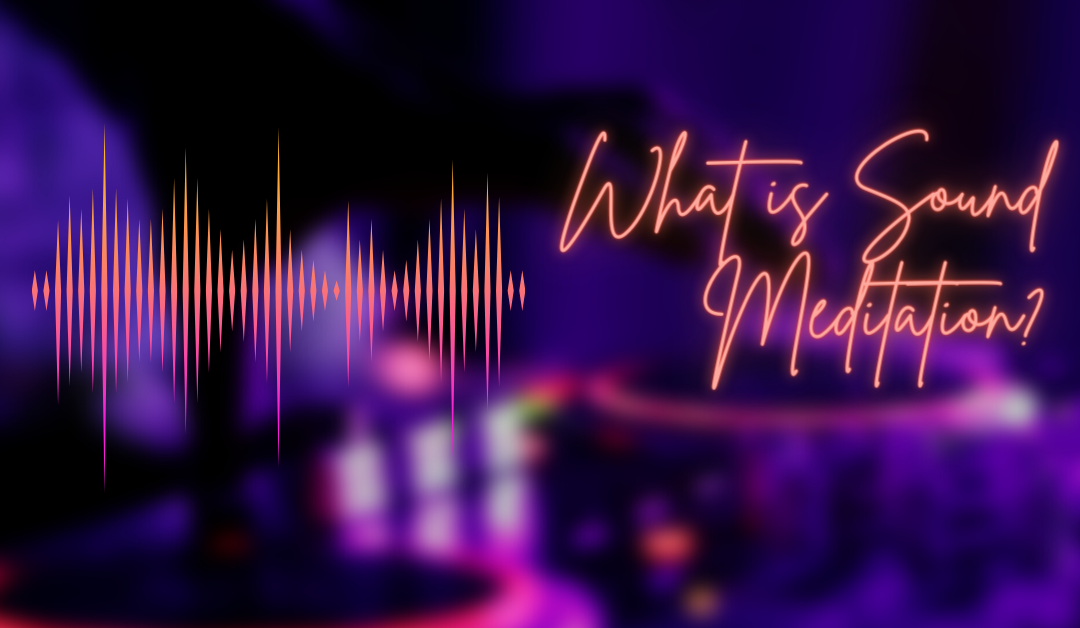Sound is powerful, and it has been used in spiritual ceremonies for 40,000 years or longer. Australian tribes were known to use singing bowls because they believed in using instruments for meditation.
And today, we’re going to cover a lot of questions on this topic, including:
- What is sound meditation?
- What are the benefits of this practice?
- What instruments can you use for meditation?
- What do studies have to say about sound meditation?
Let’s start with defining this type of meditation and explaining what it is in greater detail.
What is Sound Meditation?
Sound meditation uses sounds, which become the focal point of your practice. The idea is simple: focus on sounds and allow yourself to be 100% in the moment without distraction. Many people who practice sound therapy for anxiety find it empowering because it allows you to stop focusing on:
- Stress
- Anxiety
- Life
In your session, you’ll focus on just sound. You’ll focus on chanting, gongs or other instrument sounds to stay in the present moment.
How Sound Therapy Works
First, you’ll need instruments or tools to make the sounds and you’ll find a list of items two sections under this one that can help. Next, you’ll want to do a few of the basics to set up your meditation space, including:
- Creating a quiet space
- Removing all distractions
- Making a comfy place to sit
Your space should only be filled with the sounds that you’re making.
Next, you’ll want to begin using the instruments or sound types that you prefer, such as bowls or chanting. A few good videos which can help you get started with sound meditation, include:
Purity Sound Bath | Meditation Music for Cleansing the Mind & Spirit | Singing Bowls
Crystal Chakra Meditation with Antique Tibetan Singing Bowls
Sound meditation may not work for you, and that’s okay. There are so many different forms of meditation that you can try that will, including cord cutting, candle, mantra and even mindfulness.
Note: Many people also call this practice sound bath meditation. The “bath” is just being surrounded and immersed in the sound. Sound baths have nothing to do with lying in your tub and listening to music, although that does sound quite amazing.
Benefits of Sound Meditation
Meditation is a well-studied topic, and you’ll find a lot of benefits, which include everything from helping reduce headaches and pains to relieving anxiety and helping you focus. But every form of meditation has its own benefits, although they’re not well-studied.
Honestly, I dive into meditations and give them a try for myself without doing much research on them.
But, I did take the time to research studies on sound meditation, which you’ll find in the last section of this article. With that said, the main benefits of sound meditation, include:
- Reduce anxiety
- Reduce depression
- Alleviate tension
- Improve mood
- Add to well-being
- Short-term cognitive improvement
- Improve in recall speed
However, there are a lot of anecdotal benefits, which are claimed by people who try this meditation, including:
- Lowers stress levels
- Improves depressed mood
- Offers healing properties
- Reduces anger
- Improve sleep quality
While I cannot verify many of these claims, many of them are accepted in the meditation industry and discussed often. Try sound meditation yourself and see if it’s worth practicing or not.
Sound Instruments for Meditation
Many instruments are used to produce meditative sounds that you can focus on, and some practitioners will simply put on YouTube and listen to the sounds others are making to focus on. However, you can also buy many of these instruments yourself or may want to try them to see which you prefer.
A few of the instruments for mediation that are widely used are:
Chanting
Don’t have money to spend on an instrument? Chant. Chanting isn’t for everyone, but it’s free and something you can do any time you want. You can also try saying mantras if you don’t like chanting and don’t have one of the instruments listed below.
Mantras can be especially powerful and help you anchor your mind, too.
Singing Bowls
Using a singing bowl is most common for anyone just trying sound meditation, and you’ll actually see these bowls in action in the videos earlier in the article. You can hit the bowls with a mallet to create a resonating tone that you can focus on.
As you advance, you may try using multiple bowls to create your own orchestra of sound. Each bowl offers its own:
- Unique sounds
- Specific music notes
Many practitioners recommend spending time to find the right bowl, testing out multiple bowls and finding one that matches you. You can always keep multiple bowls available, and use each of them in your practice to create a symphony of sounds that aid in your own healing process.
Rattlers
Rain sticks and rattlers are what most people envision when they think of shamans, and you may even see practitioners using rattlers over a person’s body. If you want to connect with the spirit world or just try something different, consider these two instruments.
Tuning Forks
Tuning forks have been used for centuries to tune instruments, and they produce amazing vibration sounds, too. A lot of practitioners will use tuning forks because they believe that they help open up their chakras and meridian lines.
Plus, these forks can also help you tune other instruments that you have, which is pretty useful.
Studies on Sound Meditation
Many meditation experts recommend sound therapy for anxiety and vibrational sound healing, but does it really work? I was able to dig up a few concrete studies, which I am going to outline below and allow you to make your own judgment on the effectiveness of sound meditation.
2016 Study
A study from the University of California and the California Institute for Human Science. The study included:
- 62 women and men
- Tibetan singing bowls
The researchers state that this is a low-cost, feasible way to reduce:
- Anxiety
- Depression
- Tension
Researchers in the study did state that additional studies were needed to learn about the benefits of sound meditation for physical pain, overall well-being and mood.
2013 Study
A 2013 study on Tibetan sound meditation was done on cognitive dysfunction. The study focused on individuals who were suffering from chemotherapy-induced cognitive impairment. The study included:
- 47 cancer patients
- Mean age of 56.3 years
- 2 weekly meditation sessions over a six-week period
A control group was included in this study, and what researchers found was that meditation led to:
- Short-term cognitive improvement
- Possible increase in processing speed
- Increase in mental health
As with the last study, researchers would like additional studies to take place, which will include a larger pool of participants. The researchers were happy with the results that they saw, but they would like a larger sampling size to determine efficacy and even biomarkers for inflammation.
What is sound meditation? It’s an ancient practice that forces you to focus on the sound and be in the moment. If you’re trying to find your own meditation groove or just want to try something different, give this meditative experience a try.

